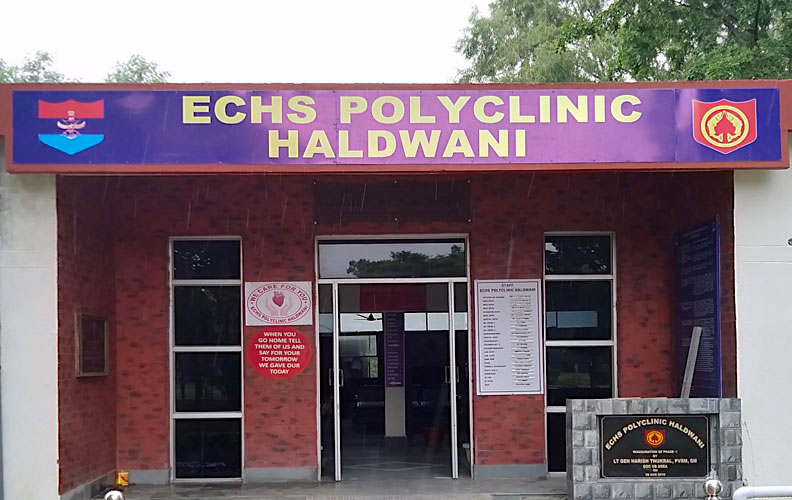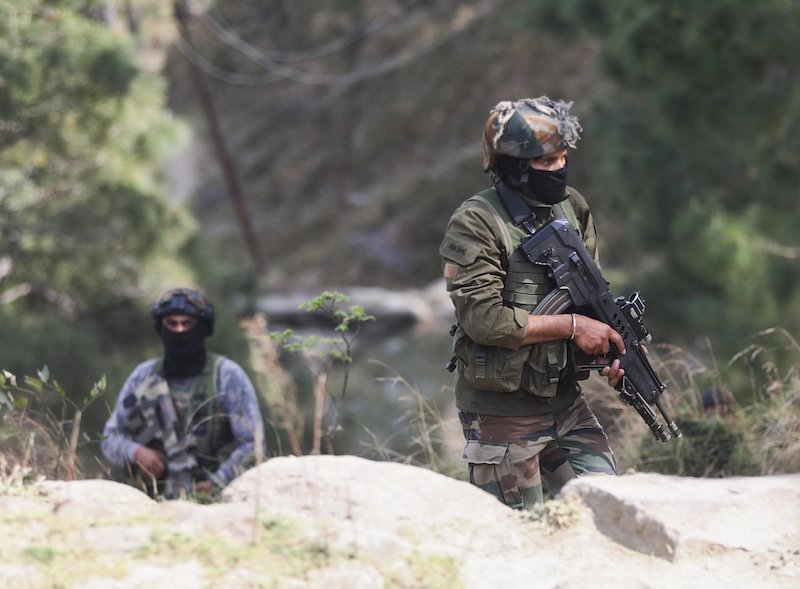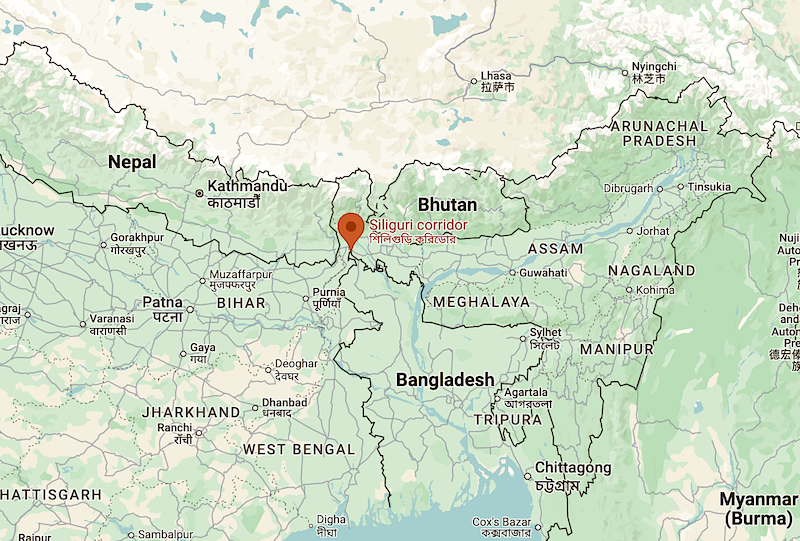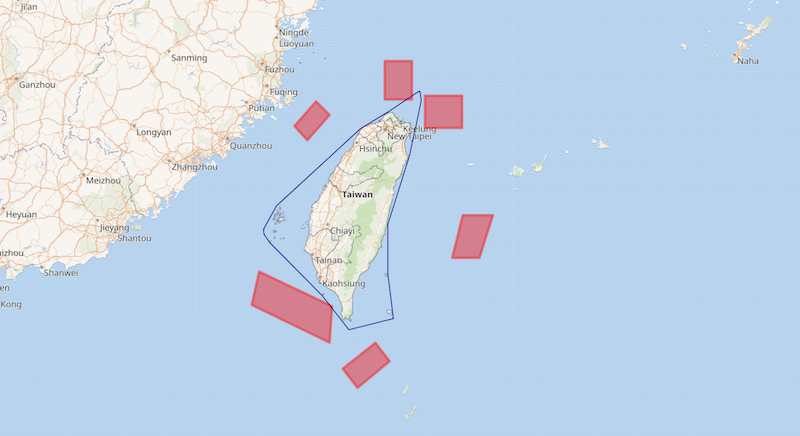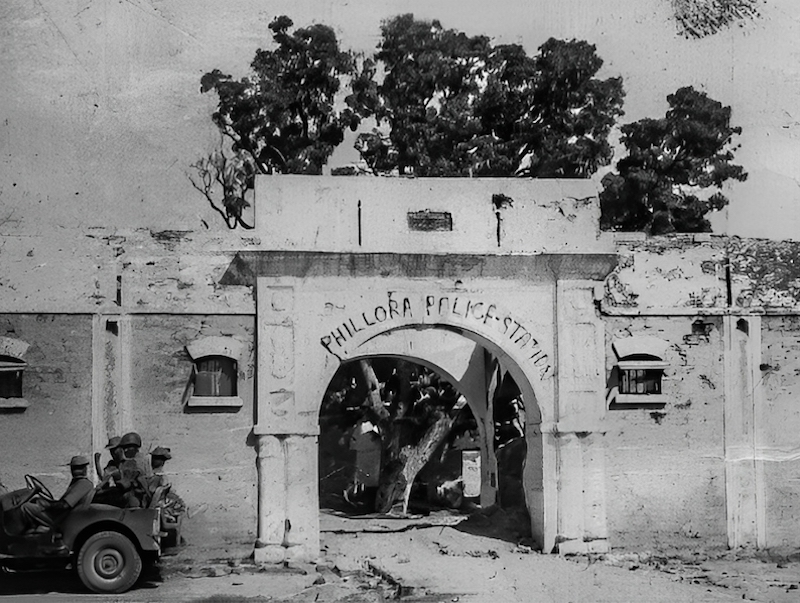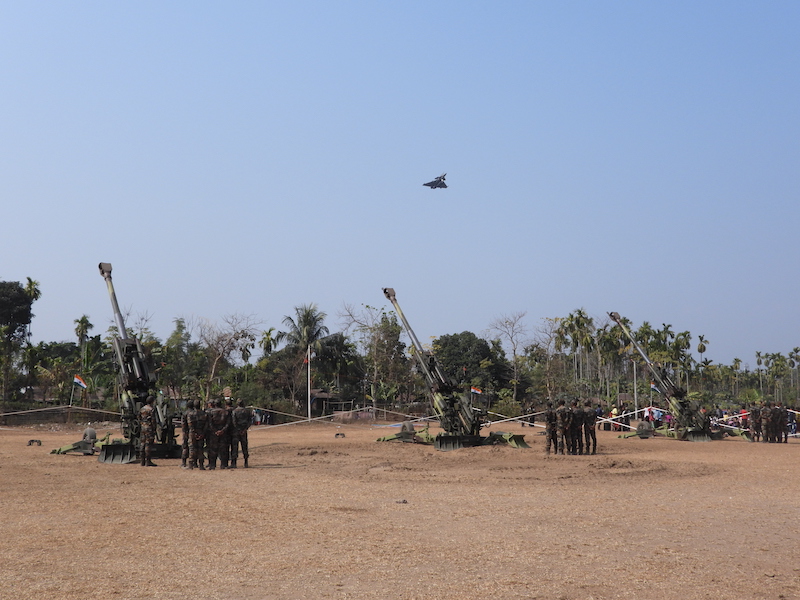 Indian Army troops and artillery guns and an Indian Air Force Rafale fighter are seen during Exercise Trishakti Prahar held in the Siliguri Corridor, in January 2023. (File photo)
Indian Army troops and artillery guns and an Indian Air Force Rafale fighter are seen during Exercise Trishakti Prahar held in the Siliguri Corridor, in January 2023. (File photo)
Recent developments in Bangladesh-China relations have set off alarm bells in New Delhi, as they potentially challenge the security of India’s strategically vital Siliguri Corridor. The Bangladeshi interim government’s overtures to Beijing raise legitimate concerns about encirclement that require India’s immediate attention.
The recent visit of Bangladesh’s chief advisor, Muhammad Yunus, to China has sparked significant worries for India. During this diplomatic mission, Yunus, who heads Bangladesh’s interim government, invited China to participate in the Teesta River Comprehensive Management and Restoration Project.
While not explicitly stated in official communications, media reports indicate that Bangladesh has also requested China to develop an airbase at a World War II-era airfield in Lalmonirhat, dangerously close to the Indian border. This concern is amplified when viewed alongside a recent covert visit by a senior Pakistan Army delegation – including the Inter-Services Intelligence (ISI) chief, Lieutenant General Asim Malik – to Bangladesh’s Rangpur Cantonment, which houses Bangladesh’s 66 Infantry Division and is also near the Indian border.
Read also: Bangladesh’s descent into chaos is a looming threat to India’s eastern frontier
These developments are occurring alarmingly close to India’s strategically crucial Siliguri Corridor, commonly known as the “Chicken’s Neck”. This narrow land strip, at its slimmest point measuring just 25–30 kilometres aerially, is wedged between Nepal to the northwest and Bangladesh to the south, with Tibet and Bhutan lying to the northeast. The corridor’s vulnerability stems from it being the only direct land connection between northeastern India and the rest of the country. In a conflict scenario, enemy control over this region would sever India’s direct land link to all northeastern states.
 The Siliguri Corridor, also known as the “Chicken’s Neck”. (Google Maps)
The Siliguri Corridor, also known as the “Chicken’s Neck”. (Google Maps)
India has consistently maintained vigilance towards any developments in this area, and Bangladesh’s collaboration with China in such proximity naturally raises suspicions. Furthermore, Yunus’s remarks during his visit, particularly his invitation for China to expand business operations in Bangladesh while emphasizing that India’s seven northeastern states are landlocked with Bangladesh serving as their only gateway to the ocean, only exacerbate these concerns.
Read also: Bangladesh’s shifting posture has strategic implications for regional stability
The Teesta river flows from Sikkim to Bangladesh, traversing north Bengal, including the Siliguri area, before entering Bangladesh. Bangladesh has been exploring options for managing the river and developing adjacent areas. The now-deposed government of Sheikh Hasina preferred India as a partner rather than China due to the river’s origin in India and was in negotiations with New Delhi for this project. Regarding the Lalmonirhat airbase, sections of Indian media have reported that such a development could pose a serious security risk to India if Chinese fighter jets gain access to or are stationed at this location.
 Dimensions of the Siliguri Corridor (in kilometres), which connects India’s northeastern states to the rest of the country. (Via Reddit/MapPorn)
Dimensions of the Siliguri Corridor (in kilometres), which connects India’s northeastern states to the rest of the country. (Via Reddit/MapPorn)
Notably, during this visit, Bangladesh also signed an agreement with China to develop the Mongla and Chittagong ports. If all these initiatives are implemented successfully, they could facilitate the influx of Chinese personnel and equipment near sensitive Indian territories, raising concerns about potential military implications.
India’s apprehensions are further justified by the opaque nature of many Chinese projects, which have been criticized for potentially serving military interests under the guise of commercial initiatives. The United Arab Emirates port issue serves as a prime example. A 2021 Wall Street Journal report [archived link] revealed that China was secretly constructing a military base in the UAE under the pretence of building a commercial port. This revelation triggered alarm throughout the region and beyond. The Emirati government was reportedly unaware that ships disguised as commercial vessels entering the Khalifa port were actually Chinese military vessels used for signal intelligence collection. This example underscores the potential risks India faces.
Read also: Bangladesh crisis – India’s security challenges, strategy to tackle them
Chinese influence extends well into Nepal, which has actively participated in China’s Belt and Road Initiative (BRI), with numerous ongoing projects focused on infrastructure, energy, and economic development. The visit by Nepal’s prime minister, Khadga Prasad Sharma Oli, to China in December last year resulted in Nepal signing a BRI framework agreement after considerable delay.
India is closely monitoring these initiatives, particularly those near Nepal’s eastern border, given their proximity to the Siliguri Corridor. China has attempted to leverage Bhutan in its encirclement strategy around the Siliguri Corridor, as evidenced by the 2017 Doklam crisis, where tensions escalated due to China’s proposed road construction in a region overlooking the corridor.
India’s concerns regarding China’s motives are well-founded. Despite growing trade ties, relations between the two nations remain tense, having engaged in significant military conflicts and skirmishes since the 1960s, including the deadly clash in Galwan in June 2020. China’s encirclement strategy, often referred to as the “string of pearls”, has further solidified its control of critical ports and established military footholds in neighbouring countries, including Sri Lanka, Pakistan, and Myanmar around India. The recent agreements with Bangladesh only reinforce this encirclement strategy.
Read also: India must consolidate its western front to tame Pakistan
However, India has not remained passive in response to these developments. Militarily, it has strengthened its defences with a robust presence in and around the Siliguri Corridor, deploying advanced fighter aircraft such as the Rafale and Sukhoi, complemented by the S-400 air-defence system and cutting-edge missile technology. This formidable military capability enables India to counter potential threats and take proactive measures if necessary. In the event of significant conflict, India stands prepared to respond decisively.
On the diplomatic and economic fronts, India has cultivated bilateral relationships with neighbouring countries to safeguard its interests, regardless of political changes. Neighbouring nations also recognize the competitive dynamics between China and India, forging ties with both while striving to maintain balance.
Muhammad Yunus must approach Bangladesh’s relationship with India judiciously, being mindful of its sensitivities and learning from the experiences of Sri Lanka and Nepal. He would do well to learn from Sheikh Hasina, who skilfully navigated relations with both India and China during her tenure. But as regional tensions persist, India must remember that strategic vigilance, diplomatic engagement, and military preparedness remain crucial in addressing evolving geopolitical challenges in its immediate neighbourhood.
Read also: Threat of China annexing Tawang is real. What must India do?
The Siliguri Corridor’s vulnerability isn’t just a military concern but represents a vital economic lifeline for the northeastern states and their 45 million citizens. Any threat to this narrow passage has profound implications for national security, economic prosperity, and territorial integrity. New Delhi must act swiftly to counter these emerging challenges through a multi-pronged approach that combines military readiness with astute diplomacy.
Disclaimer: The views expressed in the article are the author’s own and don’t necessarily reflect the views of India Sentinels.
Follow us on social media for quick updates, new photos, videos, and more.
X: https://x.com/indiasentinels
Facebook: https://facebook.com/indiasentinels
Instagram: https://instagram.com/indiasentinels
YouTube: https://youtube.com/indiasentinels
© India Sentinels 2025-26

